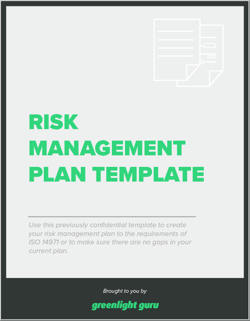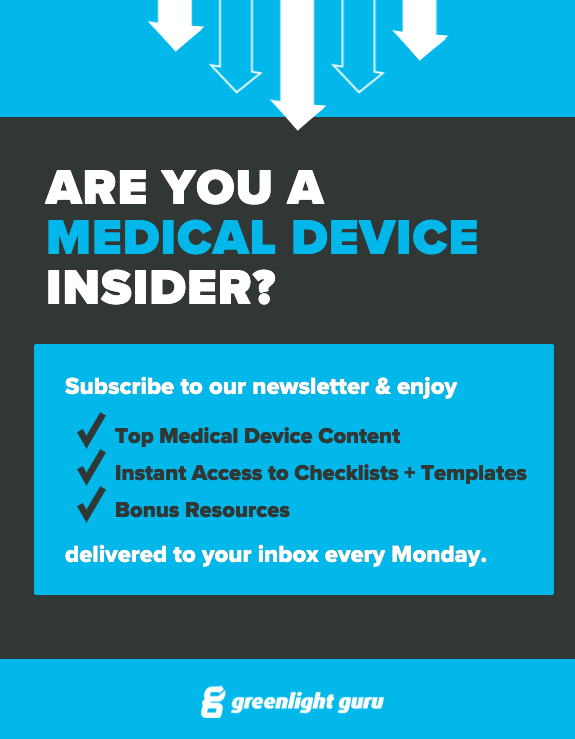Should ISO 15189 Certification Matter to Medical Device Companies?

For medical device manufacturers, a medical laboratory can play a huge role in the success of a product. This is where many types of testing can occur. Whether it’s for regulatory requirements, in-vitro diagnostics testing, certification, or early test runs of a blueprint, manufacturers depend on quite a lot from medical labs.
For that reason, there are important standards for operation that lab managers must follow. While there are multiple guidance documents to follow, the most well-known and comprehensive is ISO 15189:2012 Medical laboratories — Requirements for Quality and Competence.
Let’s take a closer look at what is required of medical laboratories, how ISO 15189 certification can be obtained, and why all of this truly matters to medical device companies.
What is ISO 15189?
ISO 15189 is an international standard which establishes guidelines and requirements for quality and competence in medical laboratories.
Published first in 2003, the standard has undergone subsequent updates in 2007 and again in 2012, of which is the current version to date. The contents of ISO 15189 was initially based on two existing standards: ISO 9001 - Quality Management Systems - Requirements and ISO/IEC 17025 - Testing and Calibration Laboratories.
In a sense, ISO 15189 serves as a “best of both worlds” mashup between the broad QMS blueprints of ISO 9001 and the technical competency factors relevant to medical laboratories found in ISO/IEC 17025.
This blend allows ISO 15189 to dive deeper into lab considerations that are specific to the medical environment, particularly in regards to the lab’s connection to quality patient care.
Today, ISO 15189 is considered the “gold standard” for medical labs. For those who manage laboratories, ISO 15189 certification—although not mandatory everywhere—is an extremely appealing option for affirming the quality of the testing facility and its staff
ISO 15189 certification occurs through a conformity assessment performed by a certified body in compliance with ISO/IEC 17011:2017.
What are the medical laboratory requirements of ISO 15189?
At its core, ISO 15189 is a guide for quality management systems of medical labs. However, unlike ISO 9001, these guidelines are not generic in scope. This standard is about affirming quality in laboratories - and not any laboratories, but medical laboratories, specifically.
So, if we’re looking to create systems with repeatable processes, documentation, corrective and preventive actions, and continuous improvement, they have to be form fit to the unique challenges facing labs used for medical testing.
ISO 15189 breaks out its compliance requirements into two camps: Management and Technical.
Management requirements of ISO 15189
When device manufacturers engage a laboratory for testing of any kind, it begins what ISO 15189 refers to as a “service agreement.” This is specifically called out because of the impact customer (manufacturer) expectations have on defining quality or success; the process of verifying test results for one study may not work for another.
The point is that quality for laboratories in medical research is dependent on both the accuracy of results, as well as the public perception of the laboratory as being high-quality, or in this case, competent.
One of the most crucial areas for evaluating competency in medical laboratories is with its staff. Per ISO 15189, there needs to be full involvement and development for all employees throughout the organization.
The goal is continual improvement, and in an ISO 15189-certified medical laboratory performing research and reporting data, this translates to well-trained employees being empowered by communicative and thorough managers in an ethical environment in which test processes and results can be verified.
Of additional importance to ISO 15189 is the establishment of a quality management system. In order to maintain quality, labs will need to create repeatable processes for:
-
Documentation and Document Control
-
Audits
-
CAPAs
-
Evaluation and Audits
-
Nonconformity Occurrence Management
Technical requirements of ISO 15189
When we think of quality laboratories, it’s easy to think of them as clean or as sterile. This a controlled environment in which experiments are performed without a single bias gone unaccounted for. Ideally, medical labs should act almost as a vacuum, in which the only things reacting to each other is occurring in a well-designed test.
However, that may be easier said than done, because it’s not just the tests inside of a lab - there are also people. There are employees, technicians, and doctors; and like all people, any one of these players is capable of making mistakes. So, the technical side of ISO 15189 creates a framework for evaluating every element of testing that could potentially cause an issue.
Facilities are a significant part of this discussion. ISO 15189 has stringent guidelines for the condition of the environment in which samples are collected and tested. The same level of care goes into outlining equipment and reagents, which includes ensuring the materials and machines used are both properly working and being used correctly. This comes back to the need for personnel management, and staying current on training, competency evaluations, and audit schedules.
Once an actual test is ongoing, the focus of the technical requirements in ISO 15189 switch to accurate sample collection and sample handling procedures. More specifically, it covers the pre examination process, such as collecting patient info and determining if they’re eligible for the test, as well as how the sample is to be collected, stored, and transported.
Finally, the technical requirements cover the review procedures of the results, as well as the process used for reporting results to staff or customers.
What are the benefits of ISO 15189 certification?
A laboratory is a place where opinion, hearsay, and fake news are rendered irrelevant. Inside a medical lab, all that survives is truth based on factual evidence and logical conclusions. There’s something strangely beautiful about the exact and precise nature in the measurements, the repeatable processes, and the crystal-clear results that come out the other side.
When a lab works to become ISO 15189 certified, it provides immediate and meaningful value. Though it can prove difficult to assign an accurate ROI to the time spent working towards this gold standard, you’ll hear a resounding yes for any stakeholder wondering, “is it worth it to get ISO 15189 certification?”
Some of the biggest benefits to ISO 15189 certification are:
-
Risk management - Mistakes are never good in any industry, especially in medical labs where a solitary mistake or misreporting of data could cause the entire experiment to fail. By adhering to these standards for quality, the chances of issues occurring or risk measures failing is greatly reduced.
-
Compliance - Though it’s not required per-say, there are global standards that may be specifically harmonized with ISO 15189. Even if not, both FDA and EU MDR require quality processes and systems to be in place, meaning that compliance with ISO 15189 may very well translate to an easier certification path.
-
Cost savings - The impact of mistakes can be costly. Imagine a medical device test that delivers incorrect results on its first trial. The lab will need to sift through each area of the test to see if the incorrect readings are coming from an internal error or a user error. The same pain points can be felt by the manufacturer who has to incur costs associated with additional testing needed.
How ISO 15189 enables continuous improvement
Medical device manufacturers are never content sitting still. The products we design are all about taking an existing world and making it a little bit better for the people in it. Continuous improvement is an incremental way up the mountain. However, with standardized maps we all look to and trust, the trek upwards can get a little easier.
ISO 15189 does this as well. By reinforcing the need to continuously evaluate and improve, the MedTech excellence for both medical device manufacturers and their partnered medical labs can be achieved. That’s exactly how Greenlight Guru’s MedTech Lifecycle Excellence Platform operates.
At Greenlight Guru, we understand excellence requires iteration. Improve the quality of life through your product by consistently meeting user needs. Learn industry best practices and unlock continuous improvement.
Interested in learning more? Contact us today for a free demo of Greenlight Guru →
Etienne Nichols is the Head of Industry Insights & Education at Greenlight Guru. As a Mechanical Engineer and Medical Device Guru, he specializes in simplifying complex ideas, teaching system integration, and connecting industry leaders. While hosting the Global Medical Device Podcast, Etienne has led over 200...
Related Posts
Let The Document Tell The Story: Document Management Best Practices
Neurotech: Accelerating Innovation in a Complex Medical Device Vertical
Managing Risk in Clinical Investigations
Get your free PDF
Risk Management Plan Template











